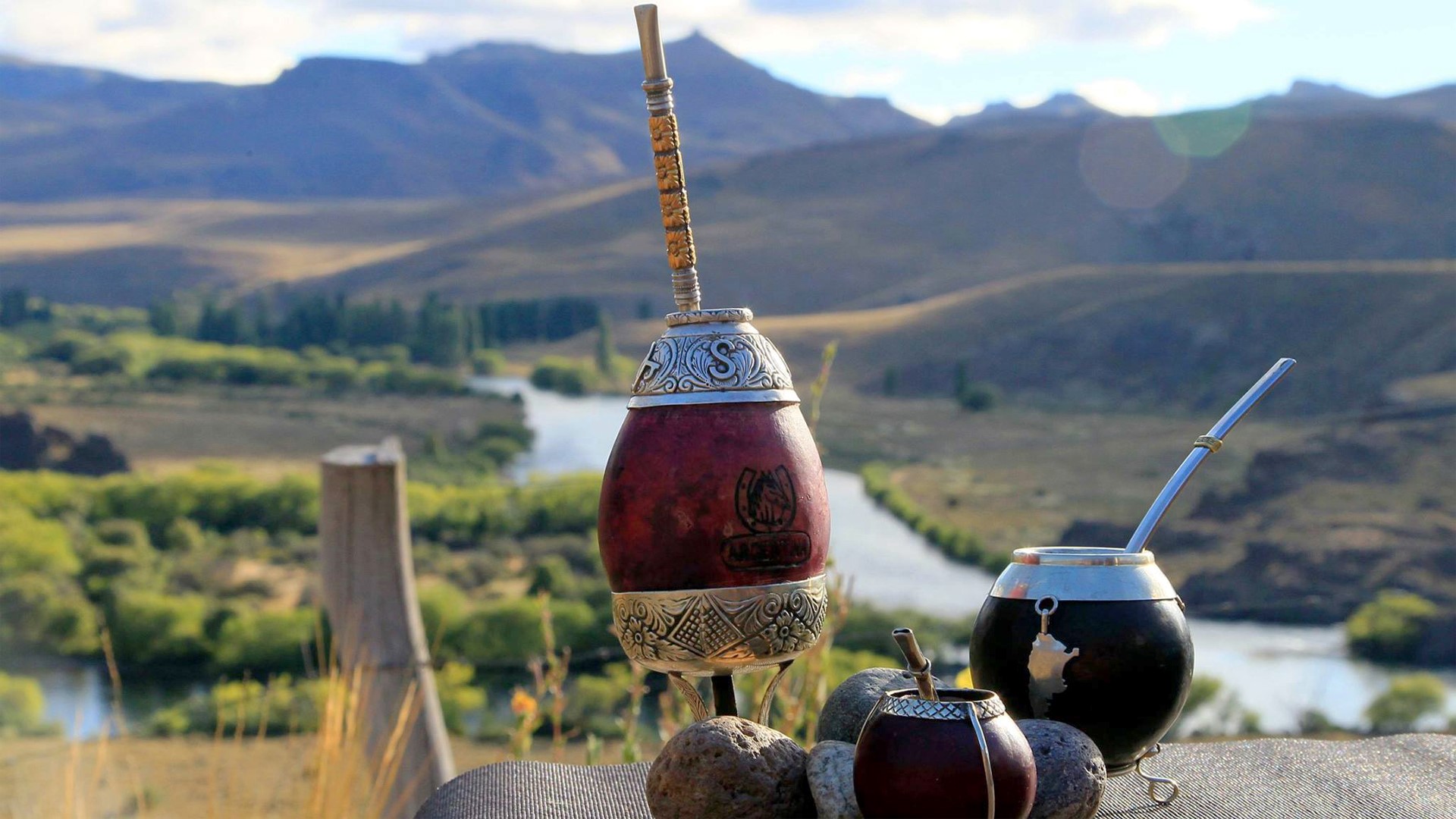Argentina and Chile, two countries with well-coded symbols and traditions.
Argentine women… the most beautiful in the world?
Fantasies for some, “cruel” realities for others, a legend??? Listening to the Argentines there is no doubt… They are very proud and you often have to measure what they say… The best would be to get an idea for yourself.
Beautiful and smiling… the art of “piropo” is something innate among Argentinians… don’t try to imitate them, you will surely be ridiculous. But what is “piropo”? It’s the South American version of seduction with a mix of romanticism and poetry; more of a game than flirting to tell the truth.
Argentines, especially the “porteños” (residents of Buenos Aires) delight in giving (more or less strong) compliments to the pretty women they pass in the street… and be careful, because there is always a game of words, a compliment, a beautiful metaphor which will have its effect on the most refractory women. Argentine women often respond with a naughty smile, which will motivate the suitor to retort even more with a new “piropo”. Argentinians love this game of seduction and Argentinians delight in these little phrases about them… Argentinians dress and therefore reveal their silhouette accordingly, for the pleasure of the eyes and of all.
Argentines, or I should rather say the inhabitants of Buenos Aires, lack identity markers, surely too proud to be the people of Latin America closest to Europe, are trying more to follow or to anticipate the fashions of the old continent than to identify with their cultures and customs, which are nevertheless so strong for me. That said, as for “Porteños” where quite a few formulas are used on this subject… my favorite is certainly: “Argentines are Italians who speak Spanish, think in French and would like to be English”.
The Art of mate and its benefits for human relationships

But what is mate?
Mate is the most popular “drink” in Argentina. You’ll see a lot of people drinking it, even more in Uruguay, Paraguay, southern Brazil and a little less in Chile. It is not a drink in the original sense of the term. Why? Well quite simply because no one drinks mate in Argentina to quench their thirst. It’s a custom, even a ritual. Mate is the complete opposite of what television is: if you’re with someone, it allows you to converse, and allows you to think if you’re alone. When someone visits another person in Argentina, the first sentence will be “hola” (hello), the second will be “¿unos mates?” (Some mates) ?).
This happens in every home in Argentina. Both among the rich and the poor, between young people and seniors. It’s the only thing fathers and sons can share without arguing or disagreeing. The purest Peronists and radicals can serve mate without looking.
Drinking mate requires 4 essential things: mate, which is in fact the container, also called “calabaza” (calabash), there is one of all kinds, more or less decorative, and of different sizes. The Mate herb “yerba mate”, several possible brands, but all come from the same crops in the province of Misiones in the North-East of the country. The “bombilla” which is a kind of metal straw with which you drink mate. Finally the “pava” (“kettle”) or “termo” (“thermos”) which keeps the water at a temperature close to boiling.
There is always a “cevador”, someone who prepares and serves the mate. When you no longer want mate, a simple “gracias” will suffice. We start giving mate to a child when he asks for it, we’ll give him rather lukewarm, with a lot of sugar (so that the mate is less bitter), milk instead of water, and he will feel like a big boy or like a big girl. Moreover, all parents feel great pride when they see their offspring a take mate for the first time.
Then, as the years go by, these children, now adults, will choose to drink it bitter or sweet, very hot or on the contrary cold “terere”, with orange peel or lemon juice for example. When two people have mate for the first time together, to avoid the risk of disappointing, the “cevador” (who is often the one receiving) will always ask “¿Dulce o amargo?” (“sweet or bitter?”). The other will certainly answer: “Como tomes vos” (“as you drink it”).
The “yerba” is the only thing you’re sure to find, when you go to someone’s house in Argentina, in a drawer or on a shelf. Always… And if it happens that you no longer have yerba for the mate, a neighbor will surely have some and will be happy to give some.
In Argentina and Uruguay, becoming a man involves a very special day. Nothing to do with going to university, or living far from your parents, or dressing differently. In these two countries, children become adults when they feel the need to drink a few mates, alone. It’s no coincidence… that day, when he will put the “pava” on the fire and prepare his first mates for himself alone, without the presence of anyone; During these long minutes, he will discover that he has a soul and will feel a strong feeling, different to everyone, and it will be a special moment.
The mate ritual is a beautiful demonstration of values
- It’s solidarity to support mates without too many flavors (“lavados”) because the discussion is good. Discussion, not mate.
- It’s the respect of these moments to speak and listen, you speak while the other serves the mate and vice versa.
- It’s sincerity to say: “Che, cambiá la yerba!” (“change the herb!”), because mate no longer has any taste.
- It’s the kindness of stupidly asking “¿está caliente, no?” (“it’s hot, isn’t it?”).
- It’s modesty to know who serves the best mate.
- It’s the generosity of giving until the end.
- It’s hospitality, the invitation.
- It’s the obligation to say “gracias” at least once a day.
- It’s an ethical, frank and loyal attitude, to come together without greater pretensions than to share.
A strong identity…
The neighborhood of La Boca
Le quartier de Buenos Aires le plus populaire à mes yeux est celui de La Boca. Quartier pauvre de Buenos Aires, il abrite de nombreux habitants originaires d’Italie et d’Espagne. Aujourd’hui, le quartier de La Boca est très prisé par les touristes qui viennent admirer en masse les façades colorées des maisons, et apprécier le rythme de vie animé du quartier. La Boca est également mondialement connue pour son club de football, le Club Atlético Boca Juniors, ainsi que son terrible stade, La Bombonera. L’occasion pour moi de vous parlez de la passion commune à tous les Argentins : le football et bien sûr de Diego Maradona.
Diego Maradona
Vous serez vite surpris de voir ne nombre de téléviseurs dans les bars, les restaurants, les lieux de rassemblement qui diffusent des matches de football. L’Argentine est, à mon sens, le pays qui montre le plus la passion pour ce sport. C’est franchement impressionnant. L’idole de tous est bien sûr Diego Armando Maradona, né le 30 octobre 1960 à Buenos Aires, surnommé “El Pibe de Oro” (“Le gamin en or”), Pelusa, Dieguito, ou encore Le Maître. Il est considéré, ici et ailleurs, comme le plus grand joueur de football de tous les temps.
Le Tango
La première image que vous aurez de l’Argentine, sera sans doute sa capitale – Buenos Aires – L’occasion pour moi de vous parler de quelques personnages et coutumes liés à cette ville : Buenos Aires et le Tango sont indissociables.
Les argentins peuvent être fiers de maîtriser certainement la danse la plus complexe au monde. Le Tango est une culture. Le résumer à la musique et à la danse serait évidemment réducteur. Les argentins ont coutume de dire que la danse sert avant tout à valoriser la femme dans sa féminité et sa sensualité. Le rôle de la femme est donc de profiter du guidage de son partenaire et des pauses pour exprimer sa fantaisie et son caractère. Assister à une Milonga à Buenos Aires sera un moment fort de votre voyage. Je vous le conseil fortement. Et vous aurez envie, tout comme moi, de suivre des cours de Tango. Je vous le dit tout de suite, c’est dur ! Parmi les compositeurs les plus célèbres de Tango, je citerai : Astor Piazzolla, Osvaldo Pugliese, Aníbal Troilo et bien sûr Carlos Gardel.
La Peña
Vous devez absolument vous rendre à une Peña en Argentine. La peña, c’est un endroit très populaire où vous pourrez écouter du folklore. Souvent un ou deux musiciens, quelquefois plus. Le public et les musiciens ne font souvent qu’un. Les rythmes qui s’y jouent sont souvent “samba” et “chacarera”. Très rythmés, les musiciens chauffent toujours l’ambiance aux cris de “arriba las palmas” / la traduction est difficile mais vous verrez alors tout le monde frapper dans les mains !!! L’ambiance dans une “peña” est à connaître absolument. Parfois la musique s’arrête d’un coup, et l’un des musiciens crie “Aro aro aro !!!…”. Quand vous l’entendrez, c’est le moment où n’importe qui peu prendre la parole pour raconter une petite “blague”.
Mais attention ce sont toujours des blagues très spéciales, un peu “cochonnes”, souvent machistes, les “belles-mères” sont rarement épargnées et c’est toujours la sur-enchère. Souvent l’un des musiciens terminera par un “aro” et quand il jugera que le temps des “blagues” est passé, la musique reprendra de plus belle avec en bruit de fond les rires souvent gras des personnes présentes dans la salle. Bien sûr la bière coule à flots et ce jusqu’au petit matin… Les plus “fortes” peñas se trouvent dans le Nord-Ouest Argentin et en Patagonie.
Les empanadas
Vous aurez aussi la possibilité de manger l’une des spécialités argentines et chiliennes : les empanadas. Les empanadas sont de petits chaussons de pâte farcis de viande, de poisson, d’œufs, de pomme de terre ou d’autres ingrédients. On les retrouve dans la cuisine espagnole traditionnelle et un peu partout en Amérique du Sud avec quelques variantes. Le nom vient du verbe espagnol “Empanar”, ce qui signifie fourrer ou habiller avec du pain. Traditionnellement, les empanadas étaient élaborées à partir d’une pâte à pain mais, de plus en plus, on utilise la pâte feuilletée. On les sert chaudes, en hors-d’œuvre, et bien souvent elles peuvent servir pour un repas entier.
En Argentine, le bord des empanadas est festonné quand elles sont farcies de viandes hachées, de raisins, de fromage, de légumes, de thon, d’olives, d’oignons, assaisonnées de poivre, de cumin… On les achète souvent par douzaine ou demi-douzaine.
Au Chili, La empanada est une variante de celle qu’on connait en Argentine, elle se compose d’une masse de farine de blé, qui contient à l’intérieur de la viande avec des oignons, un quartier d’œuf dur, olives et raisin sec et elle est cuite au four, il existe également une version frite dans de l’huile et la recette de la pâte varie un peu. Une recette assez commune d’empanada se prépare au fromage râpé.
Il existe d’autres formes d’empanadas avec des fruits de mers, surtout durant la Semaine Sainte. Elles sont composées de légumes, de la confiture de fruit (poire, pomme), ou pommes récoltées dans le Sud, mais en général, la coutume est de consommer habituellement et massivement, avec du fromage, qui se fait toujours avec du millefeuille.
Le Gaucho
Le mythe du gaucho est attaché à l’Argentine, notamment à la Pampa, ces grandes plaines situées à l’ouest et au nord du pays. Il représente la figure du “cow-boy” de l’hémisphère sud, les symboles de la liberté et des grands espaces.
L’étymologie du mot “gaucho” n’est pas claire, venant probablement d’un mot indien voulant dire orphelin. A l’origine, ce terme était employé pour qualifier des bandits avant de devenir le nom des gardiens de troupeaux. Les premiers gauchos étaient généralement des métis issus de populations indiennes et de colons espagnols. Les gauchos ont acquis un grand prestige lié à leur rôle dans la guerre d’indépendance contre les forces royalistes espagnoles.
Au 19ème siècle, le développement du pays et des élevages a contribué à sédentariser les gauchos, à les confiner dans des espaces clos pour en faire des paysans. Depuis, les gauchos vivent au cœur des estancias, ces vastes exploitations qui sont aujourd’hui au nombre de soixante en Patagonie, et qui incarnent l’aristocratie terrienne. Ce sont les estancias qui ont introduit l’élevage de moutons en Patagonie, au siècle dernier, bien après que celles de la Pampa aient développé l’élevage de bovins.
Aujourd’hui, les troupeaux de moutons peuvent atteindre quelque 50 000 têtes, et la production de laine constitue l’un des moteurs essentiels de l’économie de l’Argentine, et l’une des exportations les plus importantes après les céréales. Durant l’année, les gauchos habitent à des kilomètres à cheval de la ferme centrale, et sont responsables d’une parcelle de la propriété. Ils habitent une maison en bois, parfois avec leur famille. Ils possèdent plusieurs chevaux et des chiens de berger.
Leur quotidien se passe à cheval, à surveiller les troupeaux de manière solitaire, compter le bétail et contrôler l’état des clôtures. Les bêtes vivent en semi-liberté, lâchées sur d’immenses superficies pour être rassemblées plusieurs fois par an, ce sont les transhumances.
Ainsi, au début de l’été austral, les gauchos conduisent les immenses troupeaux vers la ferme centrale des estancias pour qu’ils y soient tondus. Cet épisode de la vie des estancias est très spectaculaire et rassemble tous les protagonistes des estancias qui attendent cet événement avec impatience car il rompt la monotonie quotidienne. A cette occasion, les gauchos emmènent leurs troupeaux respectifs, puis les reconduisent après la tonte vers leur domaine attitré, alors que la laine est expédiée par bateau vers leur pays d’importation.
Autres symboles…
L’Argentine et le Chili ont respectivement leur route mythique, la Carretera Austral en Patagonie chilienne et la Route 40 en Argentine.
La Route 40
La Route 40 est une importante voie routière d’Argentine qui traverse le pays du Nord au Sud, depuis le Cap des Vierges “Cabo Vírgenes” à l’extrême Sud de la Patagonie jusqu’à La Quiaca à la frontière bolivienne en province de Jujuy. C’est une grande route mythique qui court parallèlement à la Cordillère des Andes, reliant les parcs nationaux les plus importants. C’est la route la plus longue du pays, traversant le territoire dans sa plus grande longueur, parcourant plusieurs des régions touristiques et des attraits principaux du territoire.
La Route 40 fait plus de 4 928 km, commençant en Patagonie au niveau de la mer, traversant 20 parcs nationaux, relie 27 cols andins et monte jusqu’à plus de 5 000 mètres d’altitude, au niveau du col de “Abra del Acay”, dans la province de Salta.
La Route 40 passe par El Calafate, le Glacier Perito Moreno, le Lac Puelo, la ville de El Bolsón, San Carlos de Bariloche, Villa La Angostura. Elle fait partie de la Route du Vin “Ruta del Vino” à Mendoza. Elle conduit aux gisements fossiles de dinosaures en province de San Juan, aux sources thermales de Catamarca, à Tafí del Valle, aux magnifiques Vallées Calchaquíes, à la Quebrada de Humahuaca, patrimoine de l’Humanité, ainsi qu’à la Puna. A l’instar de la légendaire Route 66 des États-Unis, la RN 40 “Ruta Numéro 40” est un des symboles et un emblème de l’Argentine.
La Route Australe
La Route Australe “Carretera Austral” longe la côte pacifique sur 1 200 km et n’est, souvent, pas plus large de 2 mètres. Une route de rêve pour les amis de la nature et les aventuriers. Sur cette route, les voyageurs passent près de fjords, de glaciers et de volcans, traversent la forêt tropicale et la Pampa chilienne, découvrent des rivières agitées et des falaises profondes. La Carretera Austral commence à Puerto Montt, continue en serpentant le long de la côte pacifique. Un ferry permet de rejoindre, de l’autre côté de la mer, les villes portuaires que la Route Australe relie à des villages de pionniers. La route cherche ensuite son chemin à travers des parcs nationaux et des pâturages, des montagnes rocheuses couvertes de neiges éternelles et des charmantes vallées avant de se perdre, à la frontière argentine, dans le village de Villa O’Higgins.
 English
English Español
Español Français
Français
